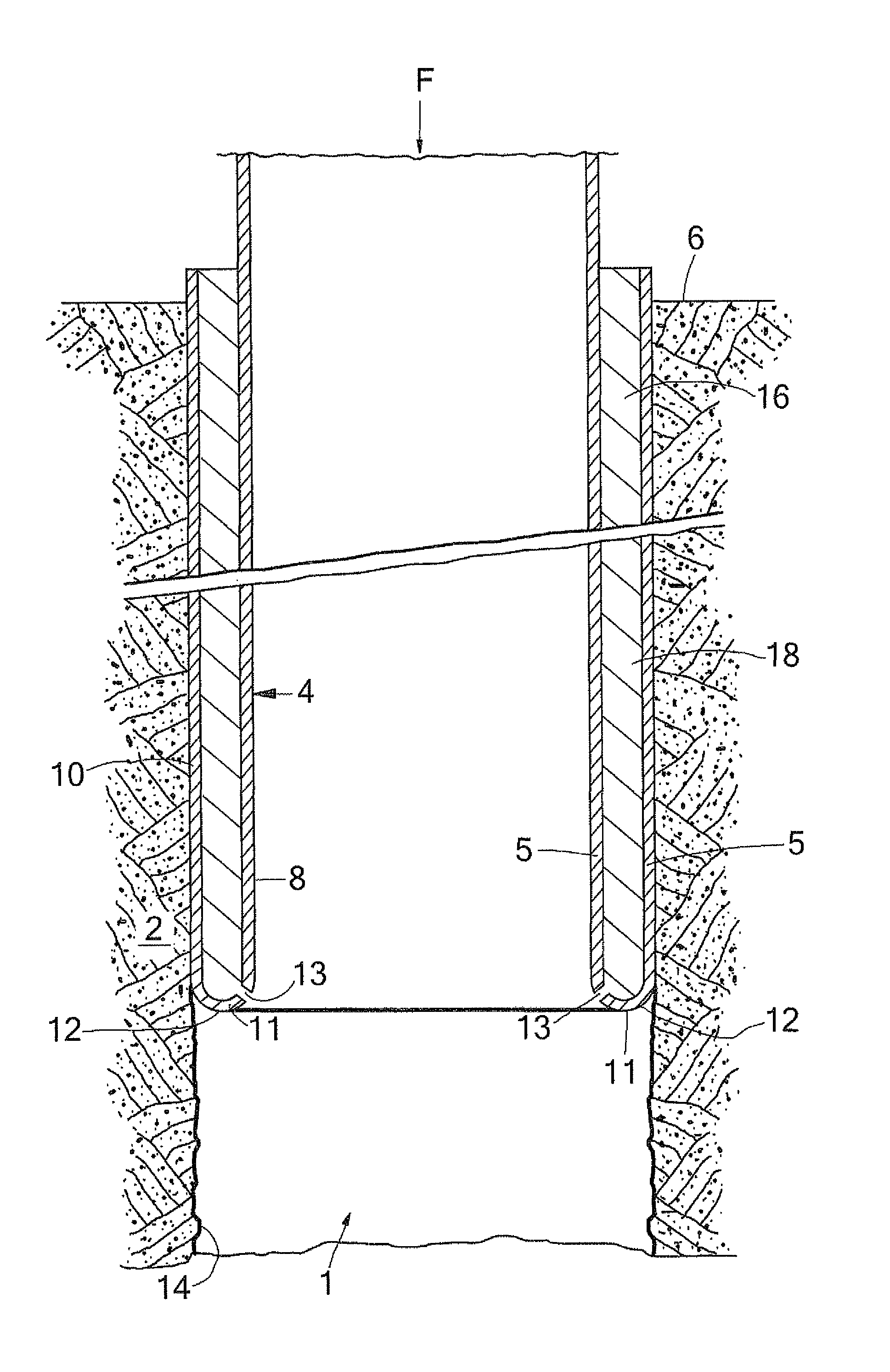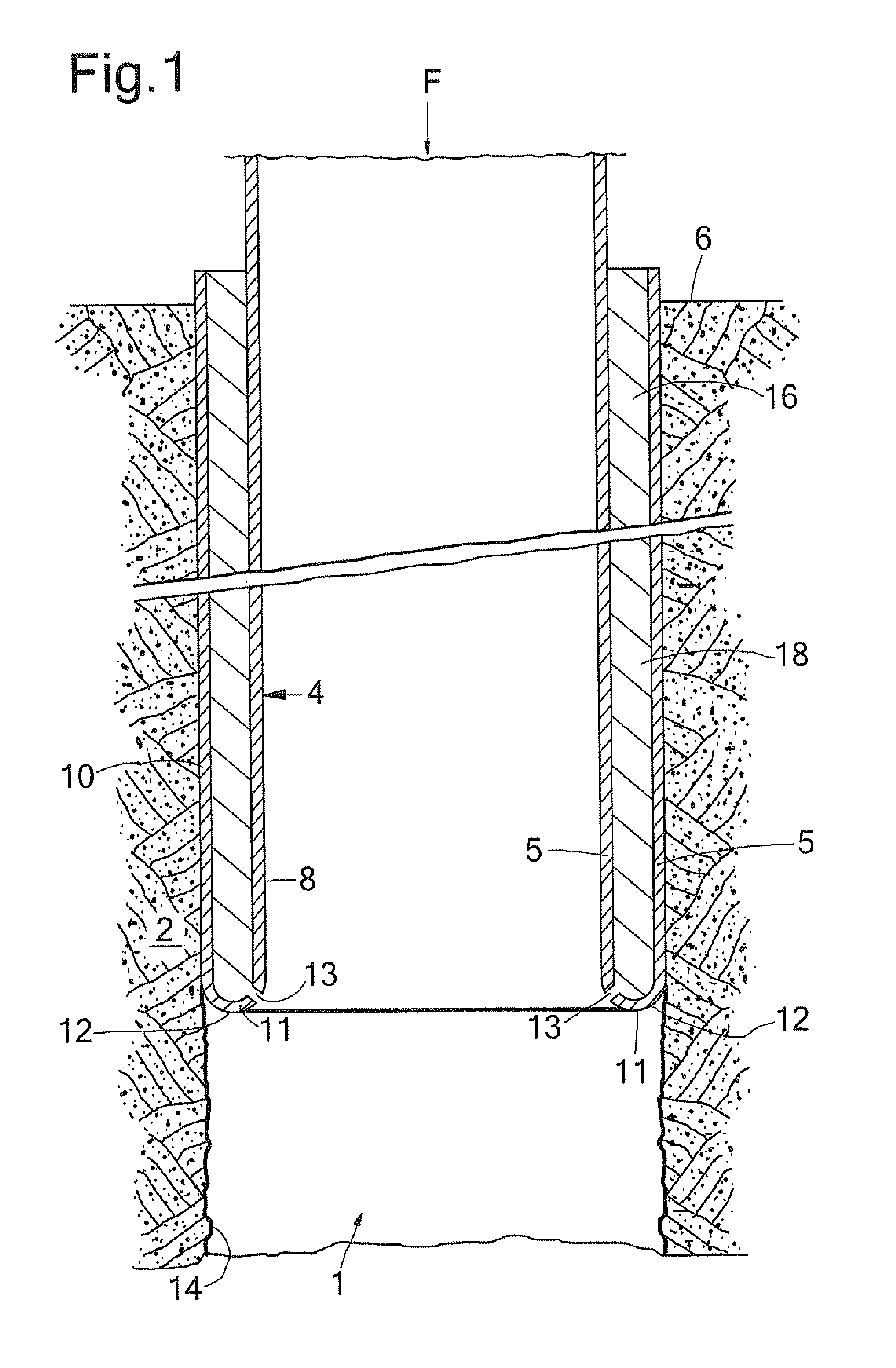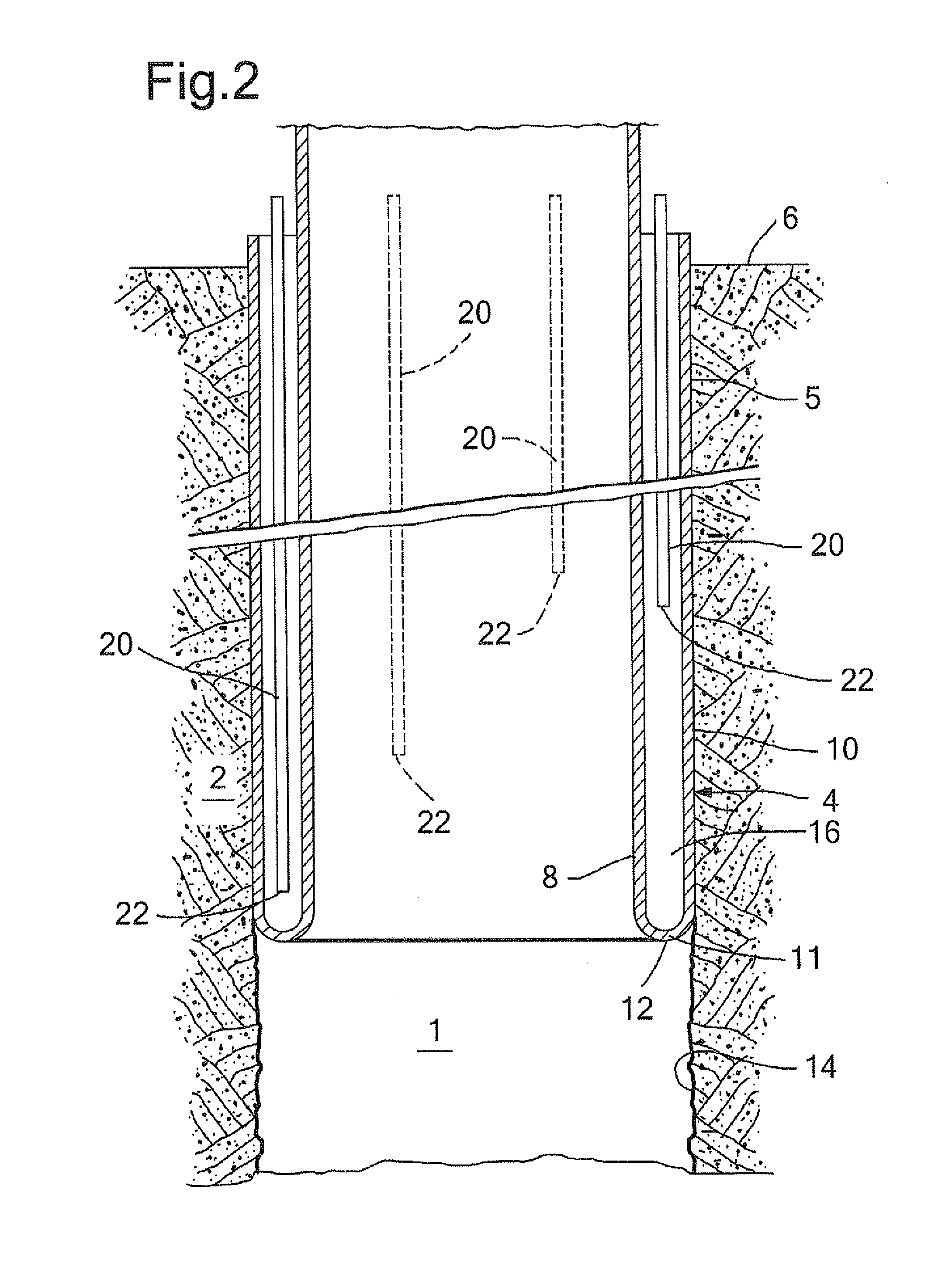Method of expanding a tubular element in a wellbore
- Summary
- Abstract
- Description
- Claims
- Application Information
AI Technical Summary
Benefits of technology
Problems solved by technology
Method used
Image
Examples
first embodiment
[0030]Referring to FIG. 4 there is shown the first embodiment during drilling of the wellbore 1 whereby a drill string 26 extends from surface 6 through the unexpanded liner section 8 to the bottom of the wellbore 1. The drill string 26 is at its lower end provided with a drill bit 27 comprising a pilot bit 28 with gauge diameter slightly smaller than the internal diameter of the unexpanded liner section 8, and a reamer section 30 with gauge diameter adapted to drill the wellbore 1 to its nominal diameter. The reamer section 30 is radially retractable to an outer diameter allowing it to pass through unexpanded liner section 8, so that the drill string 26 can be retrieved through the unexpanded liner section 8 to surface.
[0031]During normal operation of the first embodiment (FIG. 1), a lower end portion of the liner 4 is initially everted. That is, the lower portion is bent radially outward and in axially reverse direction. The U-shaped lower section 11 and the expanded liner section...
third embodiment
[0046]In a modified version of the third embodiment, the annular support members are arranged to move, together with the liner wall, through the bending zone. Thus, after eversion the annular support members are fixedly connected to the expanded liner section and extend against the unexpanded liner section.
[0047]Instead of expanding the expanded liner section against the wellbore wall (as explained in the detailed description), the expanded liner section can be expanded against the inner surface of another tubular element already present in the wellbore.
PUM
 Login to View More
Login to View More Abstract
Description
Claims
Application Information
 Login to View More
Login to View More - R&D
- Intellectual Property
- Life Sciences
- Materials
- Tech Scout
- Unparalleled Data Quality
- Higher Quality Content
- 60% Fewer Hallucinations
Browse by: Latest US Patents, China's latest patents, Technical Efficacy Thesaurus, Application Domain, Technology Topic, Popular Technical Reports.
© 2025 PatSnap. All rights reserved.Legal|Privacy policy|Modern Slavery Act Transparency Statement|Sitemap|About US| Contact US: help@patsnap.com



